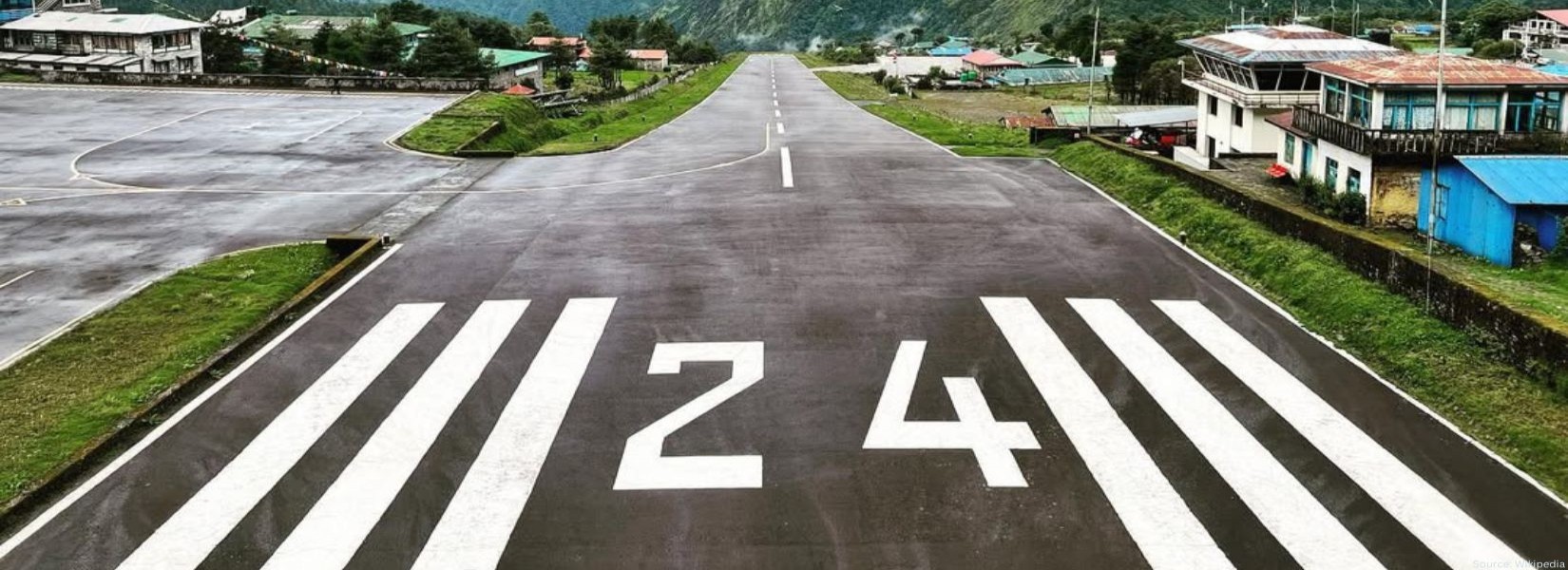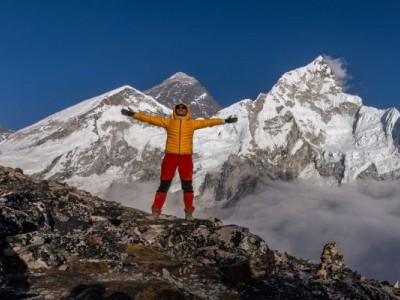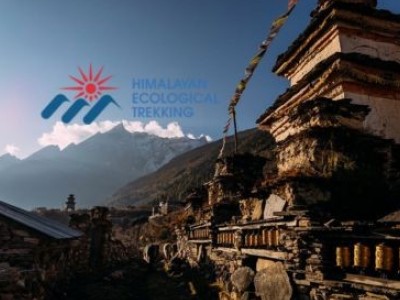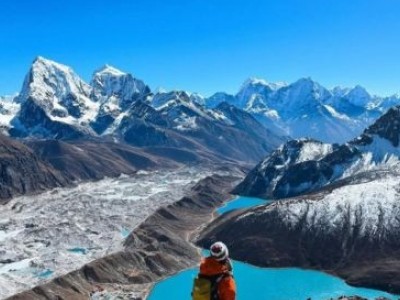Why is Lukla Airport Called the Gateway to Everest?
Lukla Airport has truly earned its title as the "Gateway to Everest Base Camp" for several compelling reasons. Perched at 9,334 feet (2,845 meters) in the Himalayan mountains, this small yet crucial airstrip serves as the primary starting point for the world-famous Everest Base Camp Trek.
Strategic Location
The distance from Lukla Airport to Mount Everest as the crow flies is around 38.5 miles (62 km), however the real hiking distance covers about 65 kilometers following the established trails through Sagarmatha National Park. This relatively short distance (compared to starting from Kathmandu) makes Lukla the most convenient access route for both casual trekkers and serious mountaineers alike.
Historical Significance
Before the airport's construction in 1964, reaching the Everest region required an arduous week-long trek from Jiri, adding significant time and physical challenge to an already demanding journey.
The establishment of regular flights to Lukla dramatically transformed accessibility to the entire region, opening Everest's majesty to thousands of visitors annually rather than just the most dedicated expeditioners.
Beginning of the Adventure
The moment travelers disembark at Tenzing-Hillary Airport, they officially begin their Everest adventure. The small settlement surrounding the airport buzzes with energy as trekkers prepare their gear, meet guides and porters, and take their first steps on a path that will lead them through legendary Sherpa villages like Namche Bazaar before reaching the iconic Everest Base Camp.
Lukla: The World's Most Dangerous Airport?
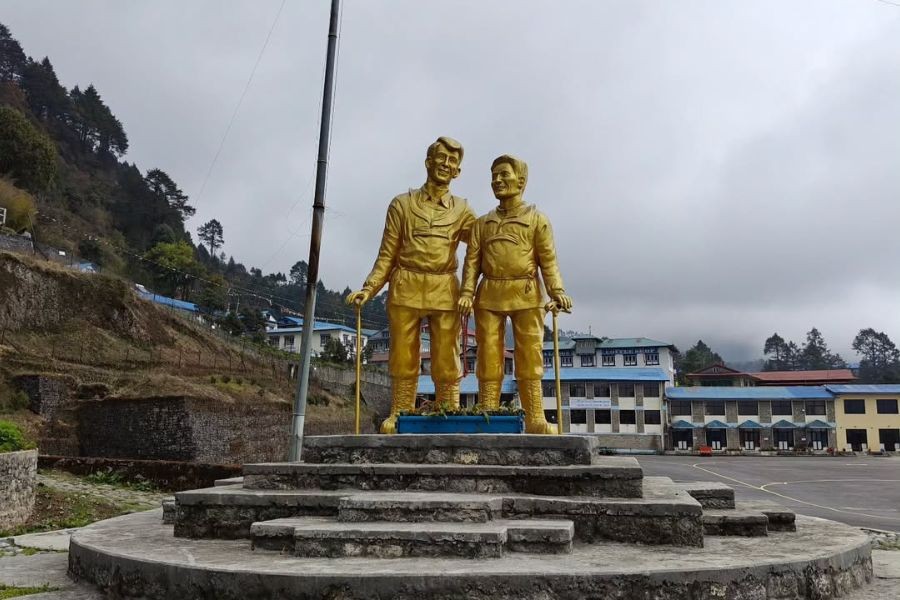
Tenzing-Hillary Airport has earned its reputation as one of the most dangerous airports in the world through a combination of extreme geography and challenging conditions that test the skills of even the most experienced pilots.
Runway Challenges & Pilot Expertise
The heart-stopping feature that immediately stands out is its incredibly short runway, measuring only 527 meters long, which terminates abruptly at a mountain wall on one end and a 2,000-foot precipice on the other.
This runway sits on a steep 12% incline, which helps arriving aircraft decelerate quickly but demands perfect execution on every landing.
Altitude and Weather Factors
The airport's elevation at 2,846 meters (9,337 feet) creates additional complications as the thin air affects aircraft performance and can trigger altitude sickness in unprepared travelers.
Perhaps most challenging is the notoriously unpredictable Himalayan weather, where clear skies can transform into dense fog within minutes, leading to frequent flight delays and cancellations that can strand travelers for days.
Safety Record
Despite its fearsome image, Lukla Airport follows relatively strict safety measures. While incidents have occurred over the years, considering the thousands of flights that land successfully each season, the airport's safety record is better than its reputation might suggest. Since 2010, there have been only 3 major incidents, with most flights landing without issue.
"Landing at Lukla was simultaneously the most terrifying and exhilarating experience of my life. One moment we were in clouds, the next we were touching down on what looked like an impossibly short runway. The skill of those pilots is extraordinary!" - Sarah M., trekker, April 2023
Kathmandu to Lukla Flight Cost & Booking (2024)
Planning your flight to Lukla requires attention to several practical considerations to ensure a smooth start to your Everest adventure.
Current Pricing
As of 2024, the Kathmandu to Lukla flight cost typically ranges between $200 to $300 per person for a one-way journey, making this 30 to 35-minute aerial experience one of the most expensive short flights in the world.
However, the breathtaking Himalayan panoramas and time saved justify the expense for most trekkers.
Booking Tips
Experienced travelers recommend scheduling your journey during the peak seasons of March-May and September-November, when clear skies and relatively stable weather patterns increase the likelihood of on-schedule departures.
Due to high demand during these optimal periods, securing your reservations at least 2-3 months in advance is essential.
Buffer Days are Essential
Perhaps the most crucial booking tip is to incorporate buffer days on both ends of your itinerary. Weather-related cancellations are common, and flights operate only during morning hours when visibility is typically best.
Having flexible dates can transform a potential logistical challenge into just another part of your Himalayan adventure.
What to Do if Stranded
If your flight gets canceled due to weather:
- Contact your airline immediately for rebooking (keep their emergency contact handy)
- Consider helicopter alternatives (though expensive at $500-1000, they can often fly when planes cannot)
- Check with your travel insurance about coverage for delays and alternative transportation
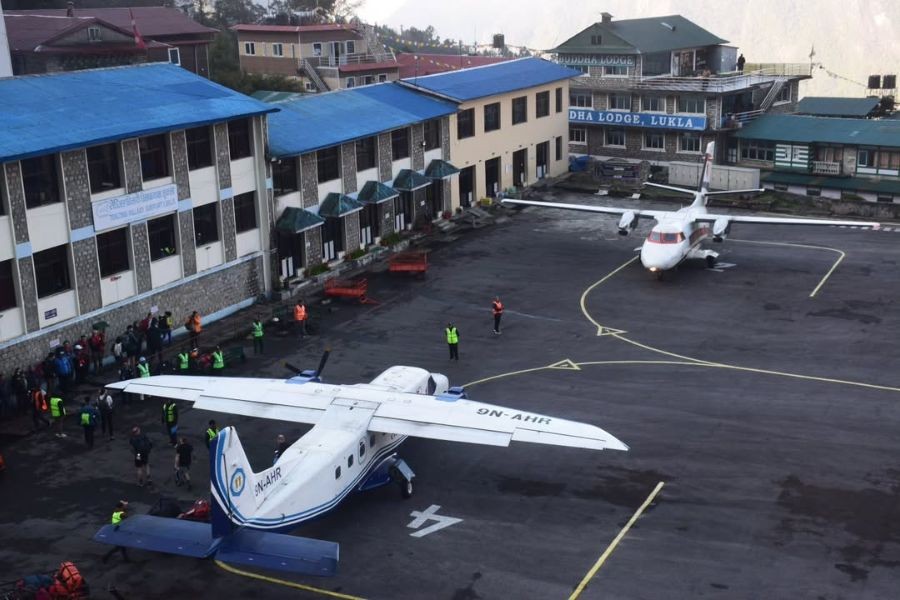
How to Reach Lukla: Flights, Helicopters & Road
| Transport Method | Cost (2024) | Time | Pros | Cons |
| Fixed-wing Flight | $200-300 | 30-35 mins | Quickest option, spectacular views | Weather dependent, strict baggage limits |
| Helicopter | $500-1000 | 45 mins | More flexible in poor weather, comfortable | Expensive, still weather dependent |
| Road to Phaplu + Trek | $50-100 + food/lodging | 3-4 days | Budget-friendly, good acclimatization | Time-consuming, physically demanding |
| Road to Jiri + Trek | $40-80 + food/lodging | 6-8 days | Historic route, excellent acclimatization | Significantly extends trip duration |
Standard Flights
The most popular and shortest way for hikers is a domestic flight from Kathmandu to Lukla. These daily flights operate from Tribhuvan International Airport's domestic terminal, with multiple airlines running the 30-minute journey in small fixed-wing aircraft that provide spectacular aerial views of the Himalayas.
Helicopter Services
For those seeking more flexibility or when regular flights face weather cancellations, helicopter services present a premium alternative. Though considerably more expensive, helicopters can often operate in conditions that ground fixed-wing aircraft and offer the added advantage of more flexible departure times.
Road Options
The road option has gained popularity among budget-conscious travelers and those preferring a gradual acclimatization approach. This journey involves taking a jeep from Kathmandu to Salleri (Phaplu) or Jiri, followed by several days of trekking to reach Lukla.
While adding 3-7 days to your journey, depending on your starting point, this method reduces altitude-related risks and provides deeper cultural immersion in rural Nepal.
Alternative Routes to Lukla (Jiri & Phaplu Treks)
While flying remains the most popular method for reaching Lukla, several alternative routes offer unique advantages for adventurous travelers seeking different experiences on their way to Everest Base Camp.
The Classic Jiri Route
The classic approach through Jiri follows the historic route used by early Everest expeditions, beginning with an 8-10 hour bus journey from Kathmandu to Jiri, followed by a 6-8 day trek through beautiful lower-elevation villages before reaching Lukla.
This was the route taken by Sir Edmund Hillary and Tenzing Norgay during early expeditions, offering a glimpse into the journey that pioneering climbers experienced.
The Phaplu Alternative
The Phaplu route has gained increasing popularity, particularly during flight disruptions. This journey starts with a jeep ride from Kathmandu to Phaplu (approximately 8-9 hours), followed by a 3-4 day trek to Lukla.
This approach provides significant cost savings compared to flying while offering additional acclimatization benefits and authentic cultural experiences in areas less touched by tourism.
Benefits of Overland Routes
Both overland options allow trekkers to witness the dramatic transition in landscapes, cultures, and vegetation zones while gradually adapting to increasing altitudes.
These alternatives transform what would be a brief flight into a meaningful journey through rural Nepal, creating a more immersive expedition for those with additional time and a desire for a more comprehensive Himalayan experience.
Final Thoughts
Lukla Airport represents far more than a transportation hub—it embodies the spirit of adventure that draws people to the Everest region. As the official gateway to Everest Base Camp, this remarkable airstrip has transformed what was once an expedition accessible only to the most dedicated explorers into an achievable dream for thousands of trekkers annually.
The adventure begins with an exhilarating flight to Lukla, where the excitement of landing at one of the world's most perilous airports serves as the first badge of courage earned on the way to Everest.
For those planning their own Everest journey, flexibility remains the essential virtue. Weather in the Himalayas follows its own rules, and even the most carefully planned itineraries may require adjustment. Building buffer days into your schedule, securing comprehensive travel insurance, and maintaining an adaptable mindset will serve you well.
The cost of reaching Lukla—whether through direct flights from Kathmandu, helicopter services, or extended trekking approaches—represents an investment in accessing one of Earth's most magnificent landscapes. What awaits beyond the airport is a journey through Sherpa villages steeped in Buddhist tradition, across swinging bridges spanning dramatic gorges, through rhododendron forests and alpine meadows, all culminating in the incomparable experience of standing at Everest Base Camp, gazing up at the highest point on our planet.
Lukla Airport may be small in size and challenging in operation, but its significance to Himalayan adventure is immeasurable. For each traveler who lands on its sloped runway, it represents not just the beginning of a trek, but the threshold between ordinary life and extraordinary experience—truly earning its reputation as the Gateway to Everest.
Frequently Asked Questions
Is Lukla Airport indeed the most dangerous airport worldwide?
While Lukla is often cited among the world's most dangerous airports due to its short runway and mountainous location, it has a better safety record than its reputation suggests. The pilots who fly there undergo specialized training specifically for these challenging conditions.
What is the price of a flight to Lukla in 2025?
As of 2025, flights from Kathmandu to Lukla typically cost between $200-300 one-way per person. Prices may vary based on season, with peak trekking months (April-May and October-November) commanding higher rates.
If my flight to Lukla is canceled, what will happen?
Flight cancellations due to weather are common. Options include rebooking for the next available flight, upgrading to a helicopter transfer (at additional cost), or taking a jeep to Phaplu and trekking to Lukla (adding 3-4 days to your journey).
How many days should I allocate for potential flight delays?
Experienced trekkers recommend building at least 2-3 buffer days into your itinerary – ideally 1-2 days at the beginning of your trip and 1 day at the end.
Is it possible to hike to Everest Base Camp without taking a plane to Lukla?
Yes, you can take a jeep to either Jiri or Phaplu and trek to Lukla, adding 3-8 days to your journey depending on your starting point. These routes offer excellent acclimatization and cultural experiences along the way.
How long is the flight from Kathmandu to Lukla?
The flight from Kathmandu to Lukla typically takes 30-35 minutes, covering a distance of approximately 140 kilometers. The short duration belies the dramatic change in scenery as you rise from the Kathmandu Valley and enter the high Himalayan landscape.
Which Lukla Route is Right for You?
The best route depends on your priorities: If time is limited, the direct flight is ideal. If you're budget-conscious with extra time, the Phaplu route (3-4 days) offers good value. For maximum acclimatization and cultural immersion, the historic Jiri route (6-8 days) is perfect. Those seeking comfort with less weather dependency might prefer the helicopter option despite its higher cost.
